Zhengjun Yue
Objective and Subjective Evaluation of Diffusion-Based Speech Enhancement for Dysarthric Speech
Aug 25, 2025Abstract:Dysarthric speech poses significant challenges for automatic speech recognition (ASR) systems due to its high variability and reduced intelligibility. In this work we explore the use of diffusion models for dysarthric speech enhancement, which is based on the hypothesis that using diffusion-based speech enhancement moves the distribution of dysarthric speech closer to that of typical speech, which could potentially improve dysarthric speech recognition performance. We assess the effect of two diffusion-based and one signal-processing-based speech enhancement algorithms on intelligibility and speech quality of two English dysarthric speech corpora. We applied speech enhancement to both typical and dysarthric speech and evaluate the ASR performance using Whisper-Turbo, and the subjective and objective speech quality of the original and enhanced dysarthric speech. We also fine-tuned Whisper-Turbo on the enhanced speech to assess its impact on recognition performance.
Towards Inclusive ASR: Investigating Voice Conversion for Dysarthric Speech Recognition in Low-Resource Languages
May 20, 2025Abstract:Automatic speech recognition (ASR) for dysarthric speech remains challenging due to data scarcity, particularly in non-English languages. To address this, we fine-tune a voice conversion model on English dysarthric speech (UASpeech) to encode both speaker characteristics and prosodic distortions, then apply it to convert healthy non-English speech (FLEURS) into non-English dysarthric-like speech. The generated data is then used to fine-tune a multilingual ASR model, Massively Multilingual Speech (MMS), for improved dysarthric speech recognition. Evaluation on PC-GITA (Spanish), EasyCall (Italian), and SSNCE (Tamil) demonstrates that VC with both speaker and prosody conversion significantly outperforms the off-the-shelf MMS performance and conventional augmentation techniques such as speed and tempo perturbation. Objective and subjective analyses of the generated data further confirm that the generated speech simulates dysarthric characteristics.
Improving child speech recognition with augmented child-like speech
Jun 12, 2024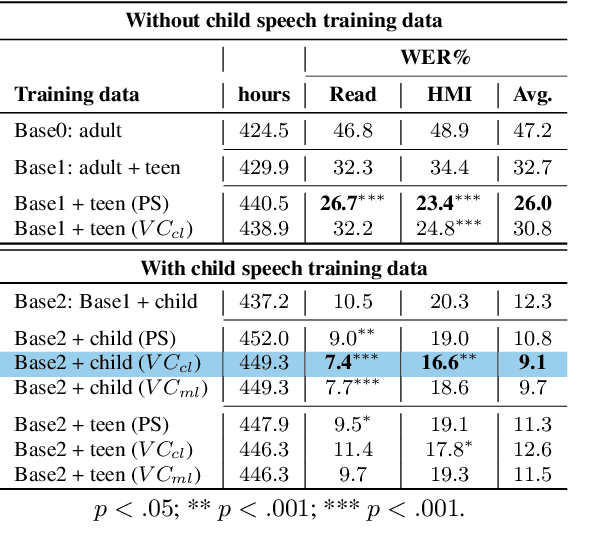
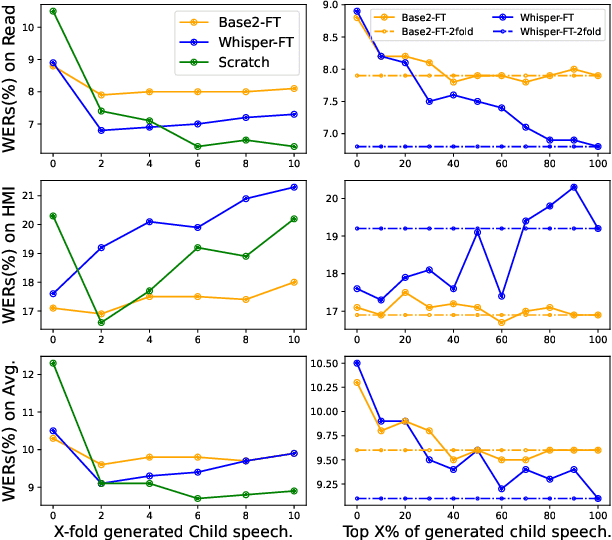
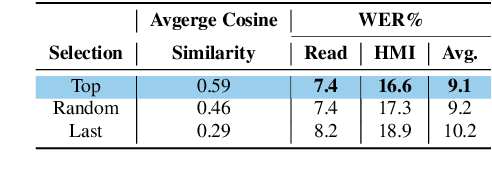
Abstract:State-of-the-art ASRs show suboptimal performance for child speech. The scarcity of child speech limits the development of child speech recognition (CSR). Therefore, we studied child-to-child voice conversion (VC) from existing child speakers in the dataset and additional (new) child speakers via monolingual and cross-lingual (Dutch-to-German) VC, respectively. The results showed that cross-lingual child-to-child VC significantly improved child ASR performance. Experiments on the impact of the quantity of child-to-child cross-lingual VC-generated data on fine-tuning (FT) ASR models gave the best results with two-fold augmentation for our FT-Conformer model and FT-Whisper model which reduced WERs with ~3% absolute compared to the baseline, and with six-fold augmentation for the model trained from scratch, which improved by an absolute 3.6% WER. Moreover, using a small amount of "high-quality" VC-generated data achieved similar results to those of our best-FT models.
Exploring data augmentation in bias mitigation against non-native-accented speech
Dec 24, 2023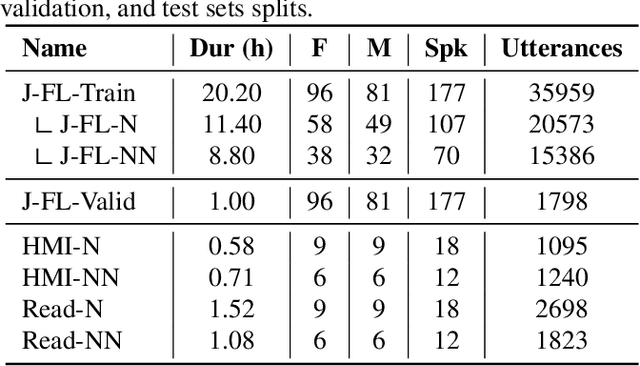

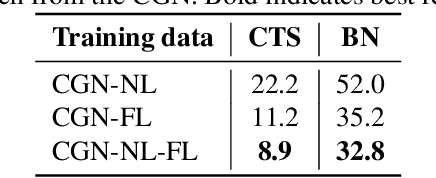
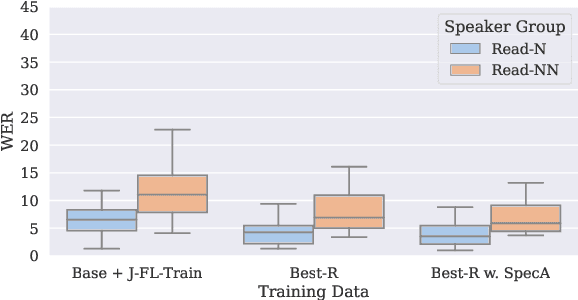
Abstract:Automatic speech recognition (ASR) should serve every speaker, not only the majority ``standard'' speakers of a language. In order to build inclusive ASR, mitigating the bias against speaker groups who speak in a ``non-standard'' or ``diverse'' way is crucial. We aim to mitigate the bias against non-native-accented Flemish in a Flemish ASR system. Since this is a low-resource problem, we investigate the optimal type of data augmentation, i.e., speed/pitch perturbation, cross-lingual voice conversion-based methods, and SpecAugment, applied to both native Flemish and non-native-accented Flemish, for bias mitigation. The results showed that specific types of data augmentation applied to both native and non-native-accented speech improve non-native-accented ASR while applying data augmentation to the non-native-accented speech is more conducive to bias reduction. Combining both gave the largest bias reduction for human-machine interaction (HMI) as well as read-type speech.
 Add to Chrome
Add to Chrome Add to Firefox
Add to Firefox Add to Edge
Add to Edge